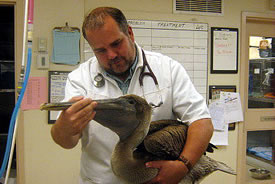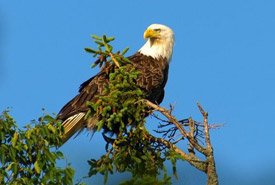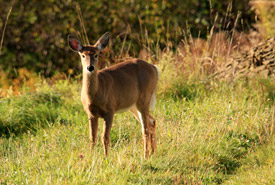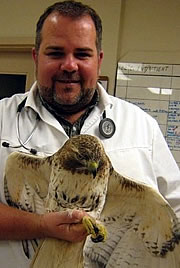Giving hope to wildlife: How rehabilitation and conservation go hand in hand

Dr. Barry MacEachern (Photo courtesy of Barry MacEachern)
It would seem that wildlife rehabilitation and wildlife conservation go hand in hand. As the main veterinarian for the Hope for Wildlife Rehabilitation Society, I have had a unique chance to see how the two areas intersect.
In my mind wildlife rehabilitation focuses on individual animals. When faced with a wild species that has been injured, I always ask myself if the animal can be repaired to a state as good as the original. I try not to save animals for release that would be at a disadvantage when competing for resources with other animals. I also try to avoid saving animals that due to genetic abnormalities are at a natural disadvantage to others of their species. I want to avoid allowing this genetic characteristic to be passed throughout the population.
Rehabilitation is at a more intimate level that the general public can easily feel a part of. Individuals find injured animals and want to see them helped. With wildlife rehabilitation, every animal/individual is important and receives care (even if that care is humane euthanasia to end suffering).
We are a society that wants instant results and gratification. With wildlife rehabilitation people can more easily see the changes they have been able to bring about by helping that one animal. I think that Hope for Wildlife’s goal of "connecting people with nature through education, rehabilitation and research," is an achievable recognizable goal.

Bald eagle (Photo by Keith Mombour)
Some of my favourite cases have involved bald eagles. Even though they are the largest bird of prey I deal with, they seem to be one of the gentlest. It's as if they know you are trying to help them as they allow complete exams and medical treatments without much of a fight. I have treated poisoned bald eagles and also repaired complicated fractures.
The best part of the whole rehabilitation process is the time of release — getting to see them take flight and ride the air currents makes it all worthwhile. Thanks to rehabilitation and conservation efforts the bald eagle is no longer endangered, which shows a success story of everyone working together.
On the other hand, wildlife conservation focuses on populations, not individuals. Of course, there are examples of rare and endangered species where conservation would be directed at the individual, but for the most part populations are the focus. And perhaps conservation is also such a big category that often individuals feel that they cannot make a change and therefore do not feel part of the efforts.
I would like to suggest that every person connecting with nature and helping wildlife in any way is actually supporting conservation efforts and helping to make a difference.
People must realize that wildlife rehabilitation and conservation are two sides of the same coin. Conservation efforts allow habitats to exist for the release of animals. Conservationists monitor populations and can often inform rehabilitators of diseases being seen in the wild.
The reverse is also true. Sometimes rehabilitators are the first to see disease coming in from the wild and should report this to people involved in conservation.

White-tailed deer (Photo by Dean Mullin)
I don’t think that locally, rehabilitation affects the overall health of a wild population. The number of animals rehabilitated and released are very small when compared to the overall population in that area. For example, the number of white-tailed deer rehabilitated and released by Hope for Wildlife does not impact the overall herd size of white-tailed deer in Nova Scotia.
However, in some parts of the world rehabilitation does play a major role in conservation efforts. I have had the opportunity to visit Homosassa Springs State Wildlife Park, where efforts are underway to rehabilitate the manatee with fewer than 2400 left in the wild. This is an example of rehabilitation and conservation working as a team to save a species.
Wildlife rehabilitation and conservation work side by side to protect our natural environment. In the end, both direct their efforts at connecting people with wildlife and educating people about the ecosystems outside their back doors.
So the next time you help that little songbird that hit the window, think about the bigger picture: we are all supporting conservation efforts in whatever way we are capable.


